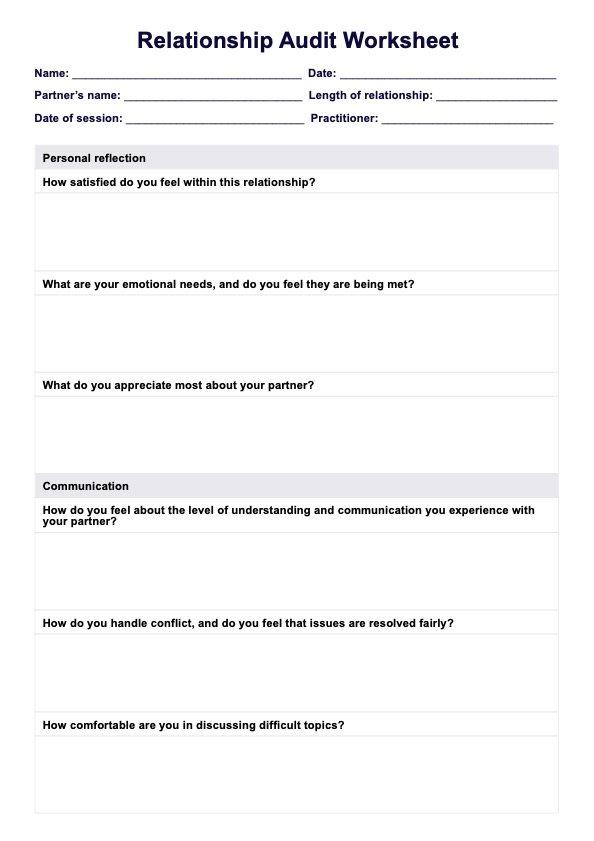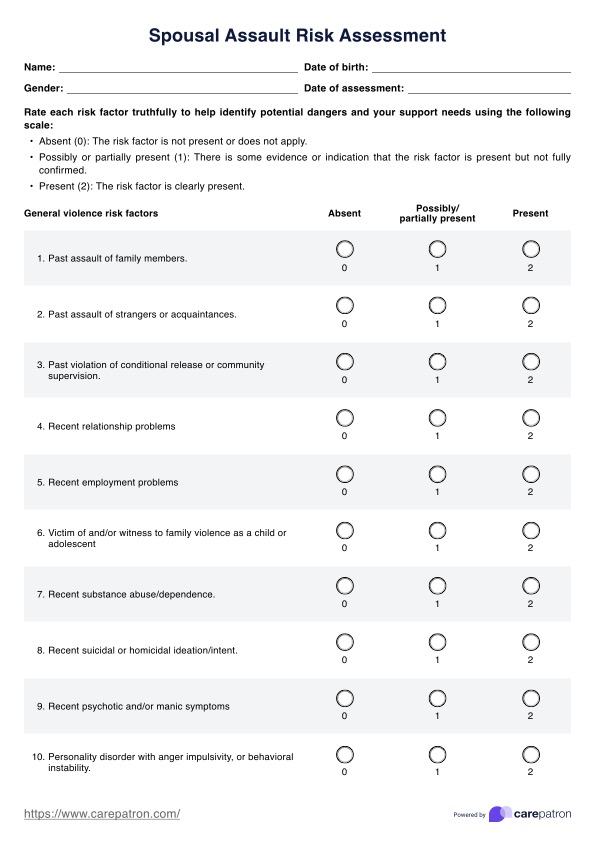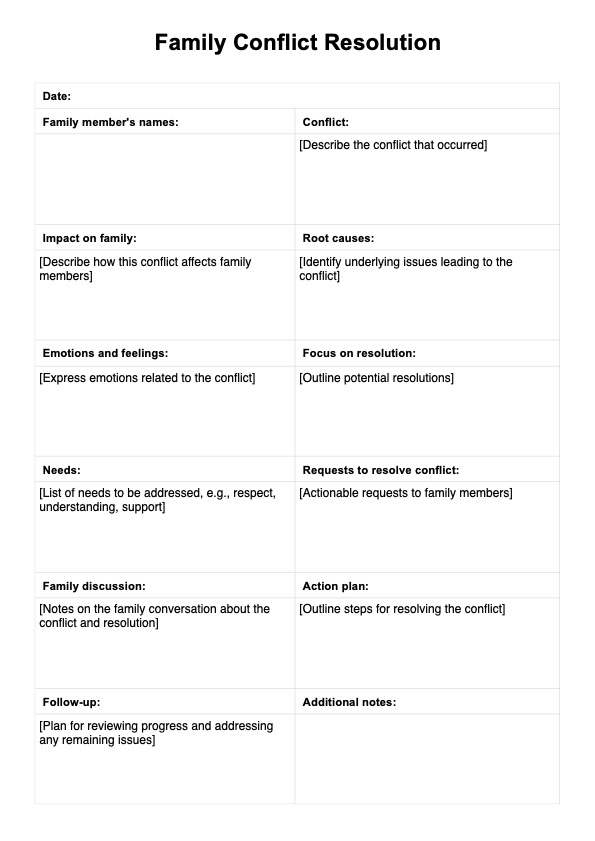Sexual Desire Inventory
Understand and assess sexual desire using the Sexual Desire Inventory (SDI-2), a reliable tool for measuring dyadic and solitary sexual desires.


What is sexual desire?
Sexual desire is the interest or drive to engage in sexual activity, rooted in biological, psychological, and social factors. It serves the purpose of reproduction, bonding, and pleasure, playing a critical role in human relationships and overall well-being. The study of sexual arousal and desire has evolved significantly over time, with early research focusing on physiological aspects, while more recent studies explore the complex interplay of emotional, cognitive, and cultural influences.
Addressing issues related to sexual desire is important because they can affect an individual's quality of life, mental health, and relationship or sexual satisfaction satisfaction. Problems such as low sexual desire, hypersexuality, or mismatched desires between partners can lead to distress, making it essential for healthcare professionals to assess and manage sexual behavior effectively.
Sexual Desire Inventory Template
Sexual Desire Inventory Example
What is a Sexual Desire Inventory?
The Sexual Desire Inventory-2 (SDI-2) is a psychological assessment tool developed by Spector, Carey, and Steinberg in 1996 to measure sexual desire across two key dimensions: dyadic sexual desire (desire involving a partner) and solitary sexual desire (desire for sexual activity alone). The SDI-2 does not account for gender differences, and as such, can be used for members of the LGBTQIA+ community. It has demonstrated strong validity and reliability, with Cronbach's alpha coefficients of 0.88 for the dyadic sexual dimension and 0.96 for the solitary sexual dimension, indicating high internal consistency (Spector, Carey, & Steinberg, 1996).
The SDI-2 is widely used in both clinical and research settings to assess sexual desire levels, helping professionals identify potential issues related to sexual health and relationship satisfaction. It is particularly useful in identifying hypersexuality, hypoactive sexual desire disorder, or low sexual desire, making it a valuable tool for diagnosing and treating sexual health concerns.
How to use our Sexual Desire Inventory template
To effectively use our Sexual Desire Inventory template, follow these steps:
Step 1: Access the template
First, access the Sexual Desire Inventory template by clicking "Use Template." This will open the template in the Carepatron app, where you can review and customize it as needed. The template contains a modified SDI-2 composed of 13 sexual desire questions; it omits one item with no weight from the original 14-item SDI.
Step 2: Explain the inventory to the patient
Before administering the inventory, explain its purpose to the patient. Ensure that they understand the questions are designed to assess their sexual desire across different contexts and that their responses should be as honest as possible for accurate results. Also, warn them about items that may appear as immodest or offensive because of their phrasing, such as questions about receiving oral stimulation or sexual thoughts involving an attractive person.
Step 3: Wait for the patient to complete the inventory
Instruct the patient to complete the inventory by responding to each statement based on their experiences over the past month. Remind them that there are no right or wrong answers, only their personal experiences and feelings. If necessary, offer to assist the patient in completing the inventory, particularly if they have any questions or concerns.
Step 4: Tally the score
After the patient has completed the inventory, review their responses and tally the score according to the instructions provided in the template. This will help you interpret their sexual desire levels and guide the subsequent discussion.
Scoring and interpretation
After the patient completes the Sexual Desire Inventory, the next step is to tally and interpret the results.
The inventory is divided into two subscales: dyadic sexual desire (items 1-8) and solitary sexual desire (items 9-13). For each subscale, sum the scores of the relevant items to get a total score. The dyadic sexual desire subscale can range from 0 to 62, while the solitary sexual desire subscale ranges from 0 to 39. Higher scores on the dyadic sexual desire subscale indicate a stronger desire for sexual activity with a partner, while higher scores on the solitary sexual desire subscale indicate a stronger desire for sexual activity alone.
While there are no universally established cutoff scores, scores around 50 and upward for dyadic sexual desire or 31 and upward for solitary sexual desire may indicate hypersexuality in their respective dimensions. Lower scores suggest lower levels of sexual desire in the corresponding area.
Next steps after completing the inventory
After the Sexual Desire Inventory has been completed and scored, it’s important to take the following steps:
- Discuss the results: Review the scores with the patient to help them understand what their results indicate about their sexual desires. Discuss how these desires align with their overall well-being and relationship satisfaction.
- Develop a personalized treatment plan: Based on the scores and the patient’s specific needs, create a tailored treatment plan for treating sexual desire disorders if they are present. This may include lifestyle adjustments, stress management techniques, or specific sexual health interventions.
- Consider individual therapy: If the scores suggest issues with sexual desire—whether too high or too low—recommend individual therapy. This allows the patient to explore any underlying concerns, such as anxiety, depression, or past trauma, that may be influencing their sexual desire.
- Explore couples therapy: If the patient’s results indicate significant differences in dyadic sexual desire compared to their partner’s, couples therapy or marital therapy might be beneficial. This can help address any relational challenges and improve communication around sexual needs and expectations.
- Medication management: In cases of hypersexuality or sexual addiction, medications such as selective serotonin reuptake inhibitors (SSRIs) or anti-androgens might be considered. These medications can help reduce sexual urges and compulsive behaviors when used under medical supervision.
- Support groups: Recommend joining a support group, such as Sex Addicts Anonymous (SAA) or Sex and Love Addicts Anonymous (SLAA). These groups provide a community of support and accountability, which can be crucial for individuals struggling with hypersexuality or sexual addiction.
Reference
Spector, I. P., Carey, M. P., & Steinberg, L. (1996). The Sexual Desire Inventory: Development, factor structure, and evidence of reliability. Journal of Sex & Marital Therapy, 22(3), 175–190. https://doi.org/10.1080/00926239608414655
Commonly asked questions
The Sexual Desire Inventory (SDI-2) is a self-report tool for measuring quantified sexual desire in two dimensions: dyadic (desire involving a partner) and solitary (desire involving oneself).
Normal sexual desires vary widely among individuals and can be influenced by factors like age, relationship status, and personal values. For most adults, normal sexual desires can range from frequent thoughts and activities to infrequent ones, depending on their unique circumstances and personal comfort levels. It’s important to remember that there is no universal "normal," and sexual desire is highly individual.
The two dimensions of sexual desire are dyadic, which involves sexual desire towards a partner, and solitary, which involves sexual desire focused on oneself.
The two types of sexual desire are spontaneous desire, which occurs without external stimuli, and responsive desire, which occurs in response to sexual stimuli.


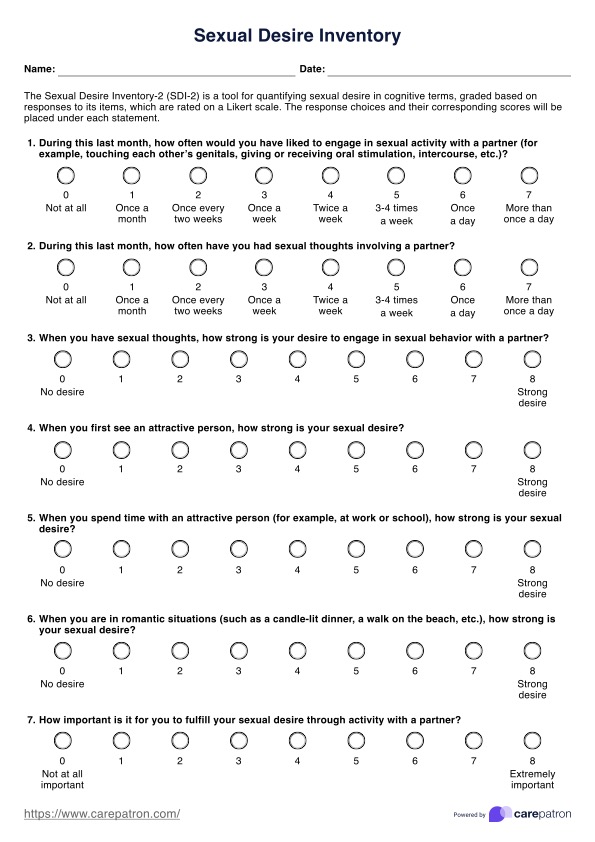
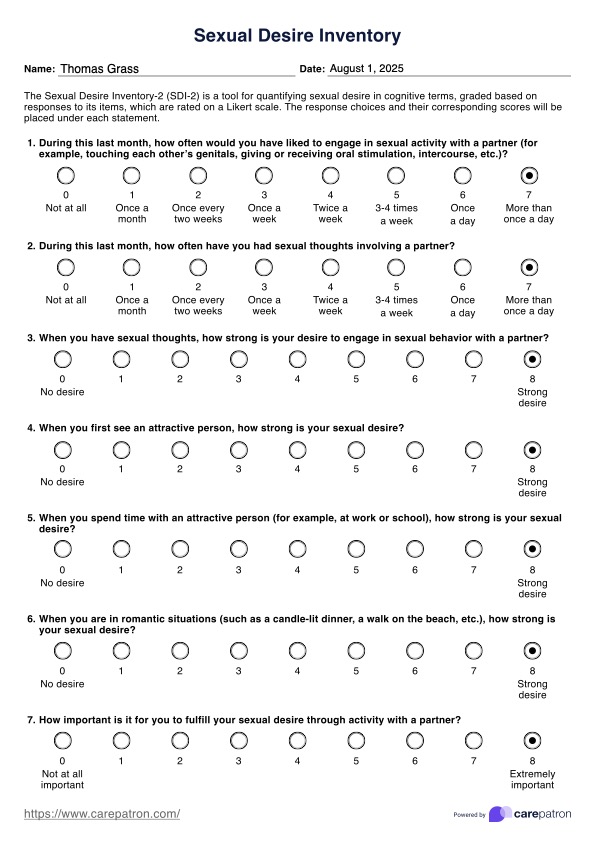















-template.jpg)


